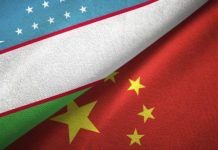BEIJING: China’s commitment to sustainable development has been bolstered by its strong green innovation, as evidenced by a recent report showing a 20 percent year-on-year increase in low-carbon patent applications, outpacing the global average.
Released by the China National Intellectual Property Administration (CNIPA), the patent report underscores China’s pivotal role in propelling global green development. It reveals that in 2023, China’s green and low-carbon invention patent applications soared to 101,000, accounting for more than half of the world’s total.
The patent surge is particularly noticeable in the new-energy vehicle and solid-state battery sectors, which can be attributed to Chinese companies’ investments in innovation.
Leading the charge is EV manufacturer NIO, which holds the industry’s highest number of invention patents. In 2023, the Chinese company’s total revenue reached 55.62 billion yuan (7.78 billion U.S. dollars), but it invested a staggering 13.43 billion yuan in technology research and development. As of June 2024, the decade-old automaker boasted a cumulative 9,000 global patent applications and grants.
Xiaomi, a newcomer to the EV industry, has also secured a significant number of patents. Known for its smart consumer electronics, Xiaomi has placed a strong emphasis on technological advancements. Before the launch of its high-tech sedan in March, the company announced the acquisition of 60 patents in motor electronic control and 65 in battery technology within just two years.
Cost-effectiveness used to be the primary competitive advantage of domestic companies like Xiaomi in market penetration. However, they have now shifted their focus to IP efforts, as they realized that prioritizing innovation is the only way to achieve sustainable development.
Many EV companies have collaborated with universities and research institutions to pursue breakthroughs in critical technologies, such as advanced materials and smart driving systems. Most of their patents are high-value ones, focusing on battery safety, performance optimization and cost control. When entering global markets, these companies established an extensive patent framework covering the entire industry chain, from component design and manufacturing to vehicle integration and intelligence, from charging facilities to service networks. –Agencies






